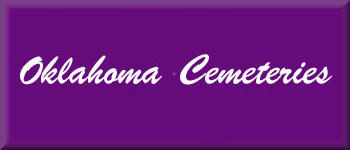


 |
 |  |
H. William "Bill" Sargent, Jr., the entertainment impresario who pioneered pay-per-view television, put such stage plays as "Hamlet," starring Richard Burton, into motion picture theatres and produced the landmark film "Richard Pryor; Live in Concert," has died. He was 76.
Sargent died October 19 in his hometown of Caddo, Oklahoma of a heart attack, according to producer David Permut, who worked with Sargent on the 1979 Pryor movie and on the filming of a one-man play featuring James Whitmore as Harry S. Truman.
"He's Mike Todd and P. T. Barnum rolled into one," Permut said of Sargent in 1986, when he was considering a film about his mentor. "I have never met a more flamboyant or brilliant promoter."
A self-described "concept man," Sargent held about 400 patents on tape heads, distribution amplifiers, electronic camera components and other assorted gadgetry. It never hurt that he also had what another associate called "audacity the size of an elephant."
Sargent, who burned down the family home trying to repair a radio for his father at age 6, had become a licensed ham radio operator by 9 and taught high school math at 11.
He started his career as an electronics expert, making his first six- figure income installing public address systems for schools and hotels.
He brought his varied talents to Los Angeles in 1959 and embarked on a charmed two decades of earning millions one month and spending or losing them the next.
"In the field of electronics, there's nothing man's mind can conceive that technology can't make work," Sargent, a pioneer in using the now- ubiquitous videotape, told The Times in 1979.
Among Sargent's grandiose, Barnum-like schemes that failed to materialize were a 1976 Beatles reunion paying the group $50 million, a play starring Elvis Presley as Rudolph Valentino at Radio City Music Hall and - in the aftermath of the film "Jaws" - a closed-circuit televised "Death Match" between a man and a great white shark. Sargent also tried unsuccessfully to block free network televising of the 1978 Super Bowl in favor of profitable pay-per-view showings in movie theaters.
But other entertainment ventures he conjured up sizzled with success.
In 1962, he introduced pay-per-view television with his Los Angeles-based Home Entertainment Co., predecessor of Subscription Television Inc., and presented a closed-circuit boxing match of Cassius Clay {now Muhammad Ali} versus George Logan in movie theaters around the country.
In 1964, Sargent founded Electronovision, using it to videotape Burton's "Hamlet" on Broadway and transfer the production to film for limited showing in 1,000 theaters. The movie grossed $3 million, nearly a third of that in profit, despite its limited technical quality.
The same year, Sargent pioneered the filming of rock concerts with "The Teenage Music International Show," or "The TAMI Show," featuring such acts as the Rolling Stones, the Supremes, James Brown, the Beach Boys, Chuck Berry and Marvin Gaye. The film is still shown occasionally by such cable companies as MTV.
In 1965, despite lawsuits, Sargent beat Joseph E. Levine in releasing a movie on Jean Harlow, with his version starring Carol Lynley. Sargent followed that with a filmed version of the musical "Stop the World: I want to Get Off."
Profits from those projects financed construction of a state-of-the-art electronic lab in Columbia, Missouri which Sargent burned down when he inadvertently placed an acetylene torch on an open 50-gallon drum of lacquer thinner. The blast blew him 175 feet and vaporized his latest fortune.
Undaunted, he raised money to build a recording studio in Salt Lake City, where part of the score for "One Flew Over the Cuckoo's Nest" was recorded. But the location failed to catch on with recording artists, and investors followed Sargent into another communal financial bath.
Next, he became intrigued with Whitmore's performance as Truman and chased writer-producer Samuel Gallu around the country seeking film rights to the play.
The impresario finally landed the deal when the production was at L.A.'s Ahmanson Theatre.
Shown in 1,565 movie theaters for three days in 1975, the film updated by Sargent's greatly improved video-to-film process - he called it Theatrovision - grossed more than $15 million. Whitmore was nominated for an Oscar.
Another Sargent company, Special Event Entertainment, provided what many consider the producer's crowning achievement - "Richard Pryor: Live in Concert." Sargent produced and distributed the film, which became the highest-grossing concert movie in history and a classic by which other comedy concert productions are still measured.
The North American Theatre Owners named Sargent its Showman of the Year.
Living in retirement in Oklahoma, Sargent had recently been working on his memoirs. In that material, according to Permut, Sargent wrote: "I am known to people in different walks of life very differently. To some I am an electronic expert, to others a man with great ideas, but to most a good promoter."
Sargent is survived by his wife, Helen; children Robin, Serene, Rusty, Randy and Rodney; sisters Patricia Sterner and Mary Fishbach; brother Mike; and several grandchildren and great grandchildren.
Private services are planned in Caddo. Instead of flowers, Permut said, memorial donations may be made to the Bill Sargent Scholarship of USC's Peter Stark Producing Program, addressed to the Bill Sargent Memorial Fund, USC School of Cinema-Television in care of Cynthia Iwanaga, George Lucas Building, Room 209, Los Angeles, CA 90089-2211.
This site may be freely linked, but not duplicated in any way without consent.
All rights reserved! Commercial use of material within this site is prohibited!
© 2000-2024 Oklahoma CemeteriesThe information on this site is provided free for the purpose of researching your genealogy. This material may be freely used by non-commercial entities, for your own research, as long as this message remains on all copied material. The information contained in this site may not be copied to any other site without written "snail-mail" permission. If you wish to have a copy of a donor's material, you must have their permission. All information found on these pages is under copyright of Oklahoma Cemeteries. This is to protect any and all information donated. The original submitter or source of the information will retain their copyright. Unless otherwise stated, any donated material is given to Oklahoma Cemeteries to make it available online. This material will always be available at no cost, it will always remain free to the researcher.